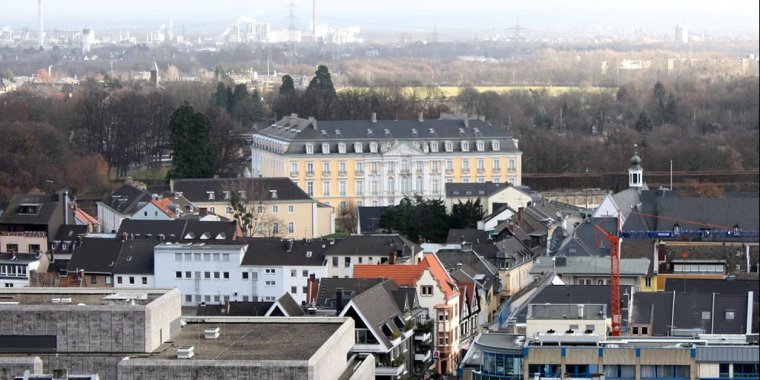| Travel / Tourist Attractions |
Tourist Attractions in Brühl, Germany
Brühl is a town in the Rhineland, Germany. It is located in the district Rhein-Erft-Kreis, 20 km south of the Cologne city center and at the edge of the Kottenforst-Ville nature reserve.
• Augustusburg Palace (Schloss Augustusburg). Tu-F 9AM-Noon 1:30PM-4PM Sa-Su 10AM-5PM. The Augustusburg Palace has been placed on the UNESCO World Heritage List. The palace is one of the key works of Balthasar Neuman, and contains one of the finest Rococo interiors in the world, the highlight being the main staircase. Entry to Augustusburg is only by guided tours that are on the hour. is Also in the grounds is the magnificent hunting Lodge of Falkenlust, roughly 2km from Augustusburg. Tickets are available for each palace independently. Tickets to Falkenlust include an audio guide. Both palaces: €13/adult, €10/concession, €27/family, €7/student.
• Max Ernst Museum, Comesstraße 42/Max-Ernst-Allee 1, 50321 Brühl. The Max Ernst museum is a short walk from both the Augustusburg Palace and Brühl station. It contains six rooms of paintings, sculptures and characteristic mixed-media collages covering the surrealist artist's extensive career. The staff are both helpful and knowledgeable and provide guided tours. The museum also hosts temporary exhibitions. You can buy combined tickets for the Palace and museum from the main desk.
• The amusement park Phantasialand. Is a theme park that attracts approximately 1.75 million visitors annually. The park was opened in 1967 by Gottlieb Löffelhardt and Richard Schmidt. Although starting as a family-oriented park, Phantasialand has also added thrill rides, especially during recent years. Furthermore, following the example of Europa-Park, they have decided to attract business customers beside the regular ones, calling it "Business to Pleasure".
• Rheinland Nature Park (Naturpark Rheinland) is a nature park in North Rhine-Westphalia, situated between Bergheim, Kerpen, Erftstadt, Euskirchen, Königswinter, Bornheim, Bonn, Brühl, Hürth, Frechen and Pulheim. It covers an area of about 880 km². In the vicinity of Erftstadt, Brühl and Hürth many small and large lakes have been created due to coal mining. The reforestation of the area was begun in 1920 by planting beech, pine, oak and larch trees. Today, there are about forty lakes that have sprung from the mining operations. (Wikivoyage, Wikipedia)
See also Brühl in Pictures.
YOU MAY ALSO LIKE










